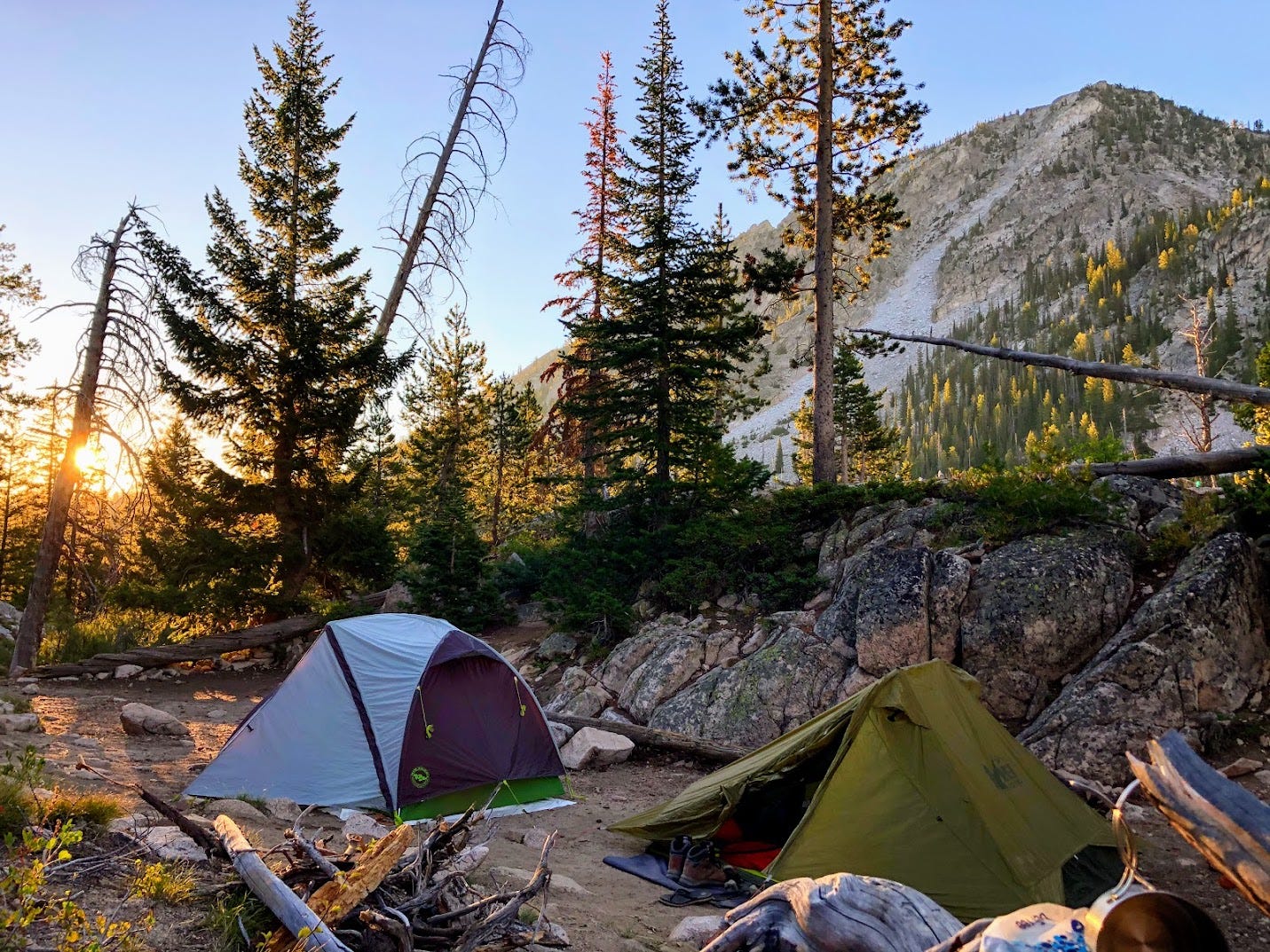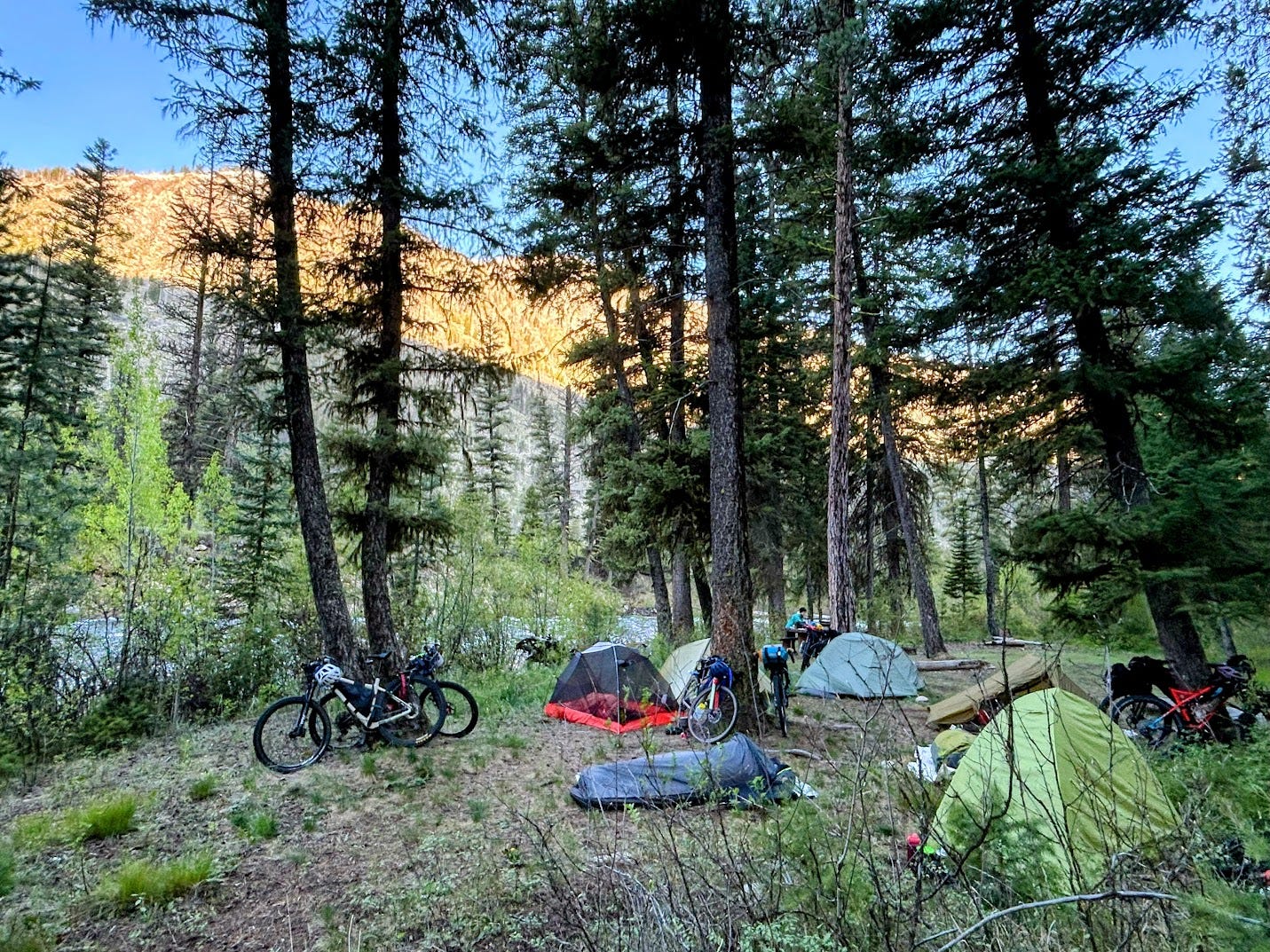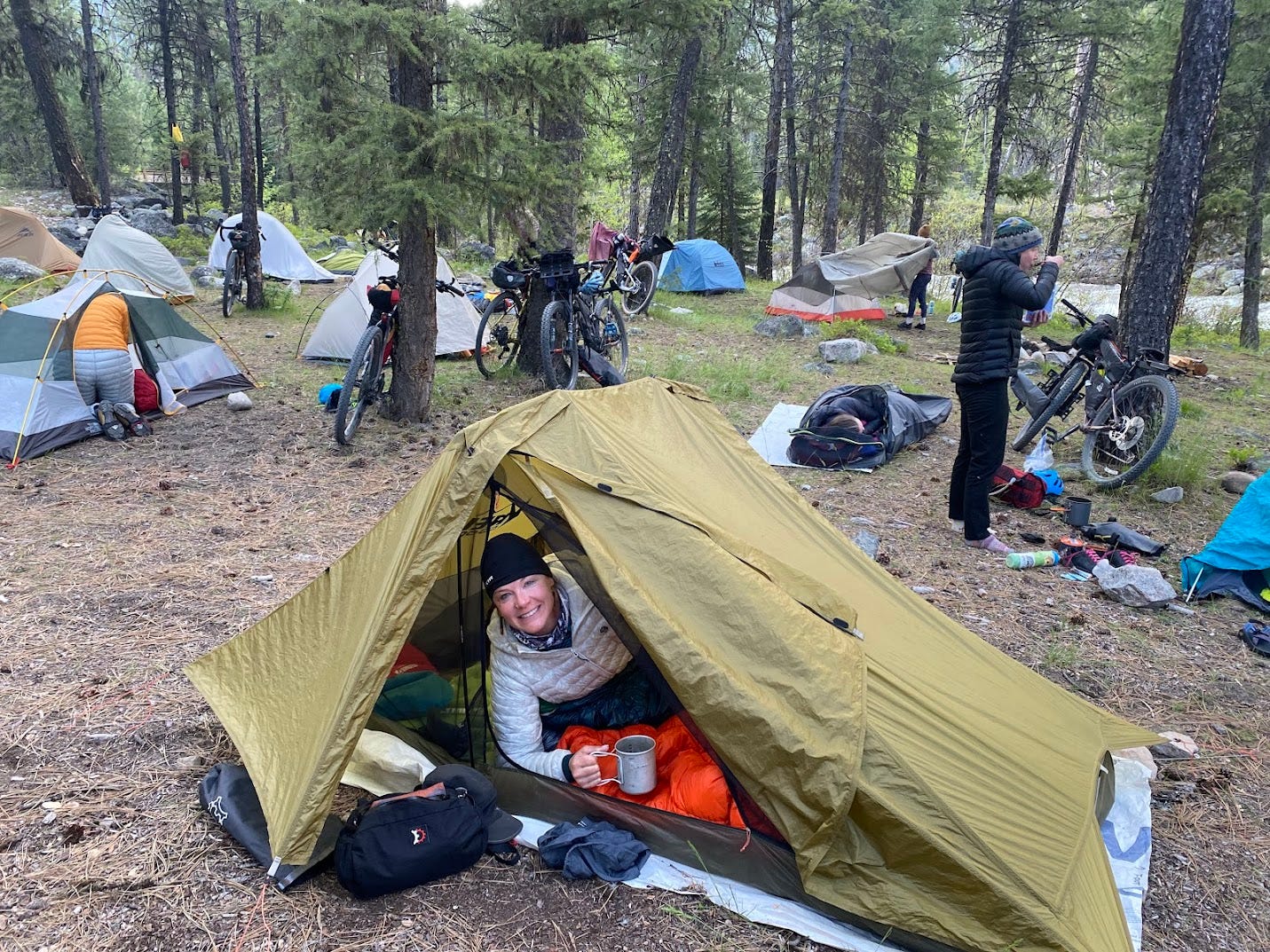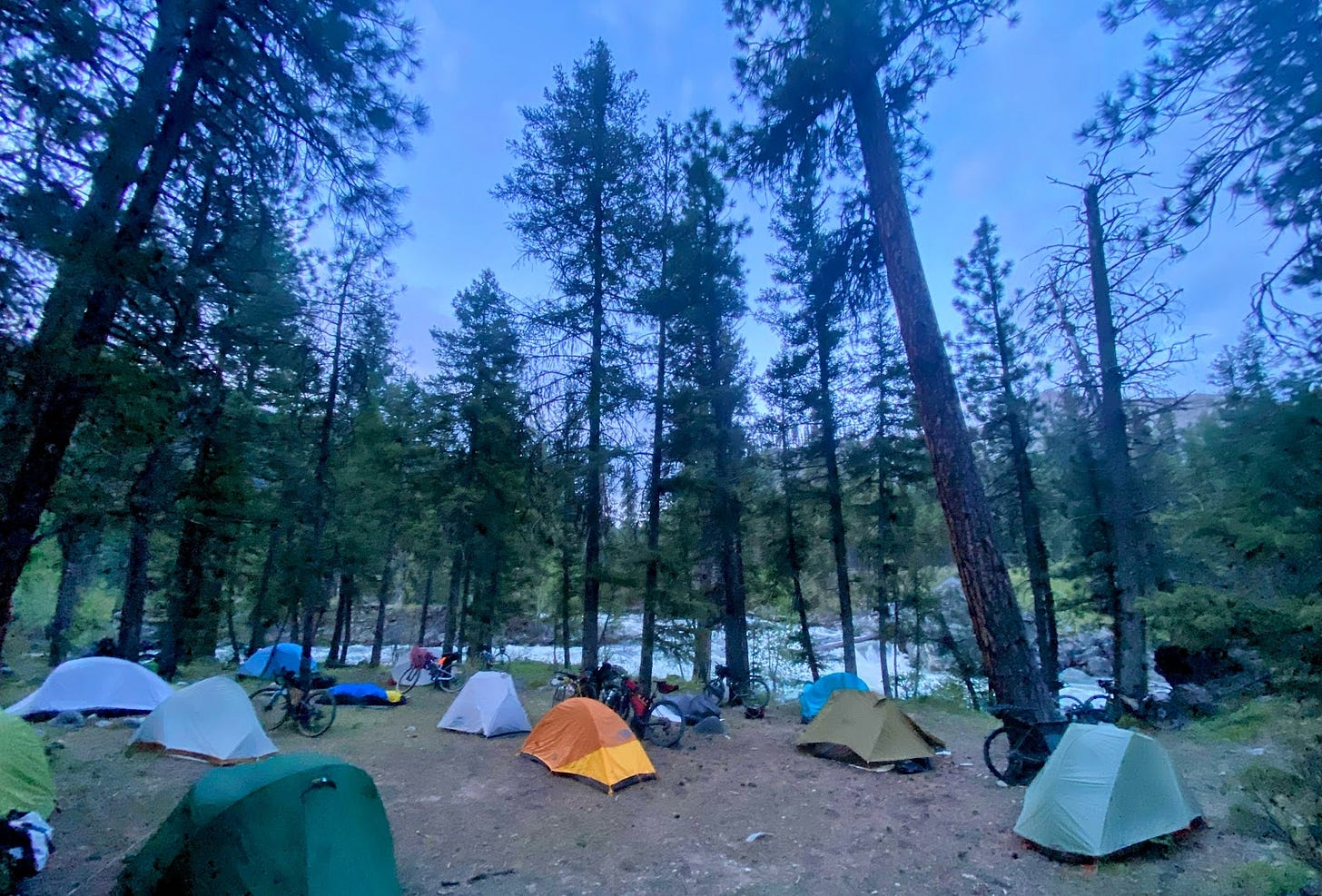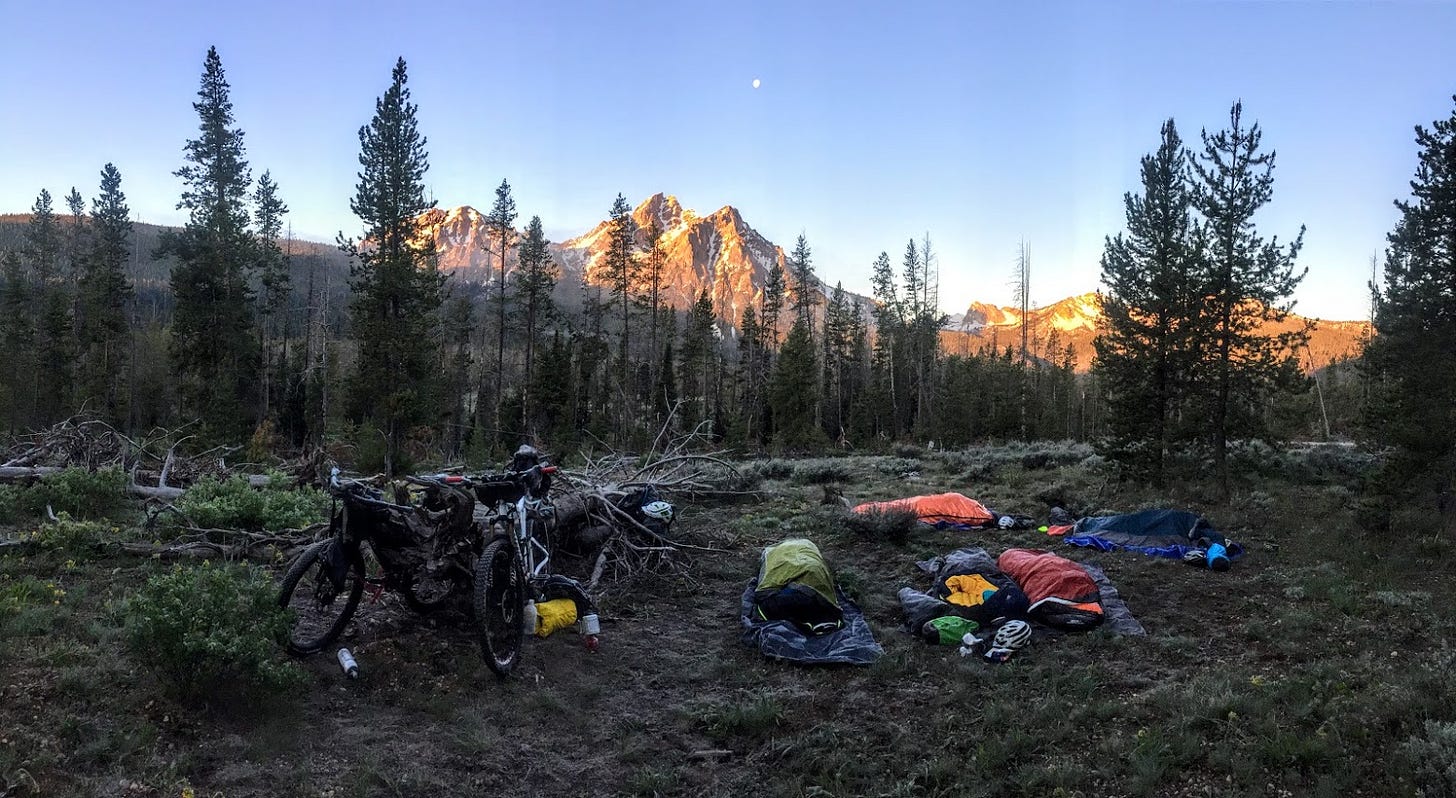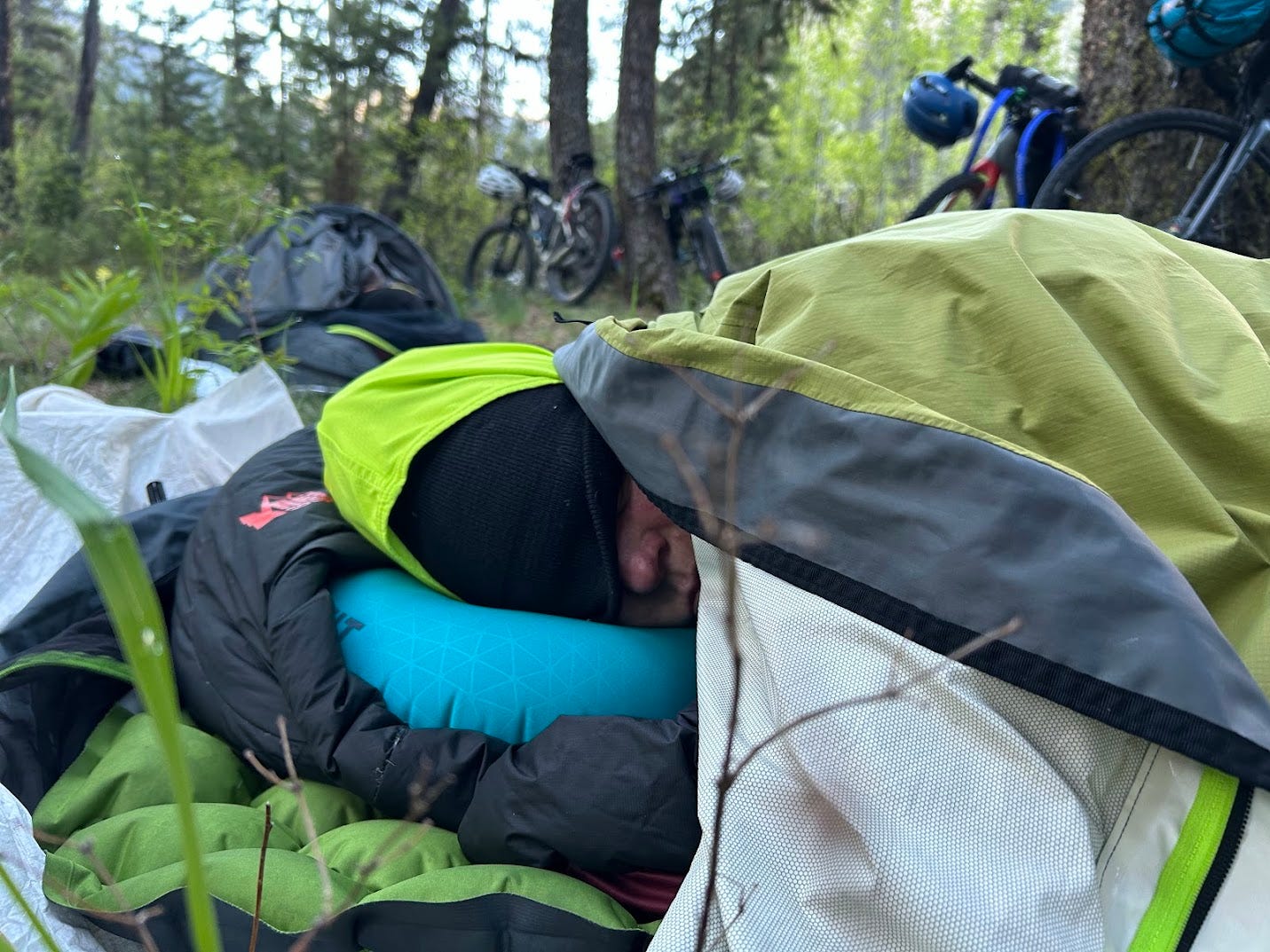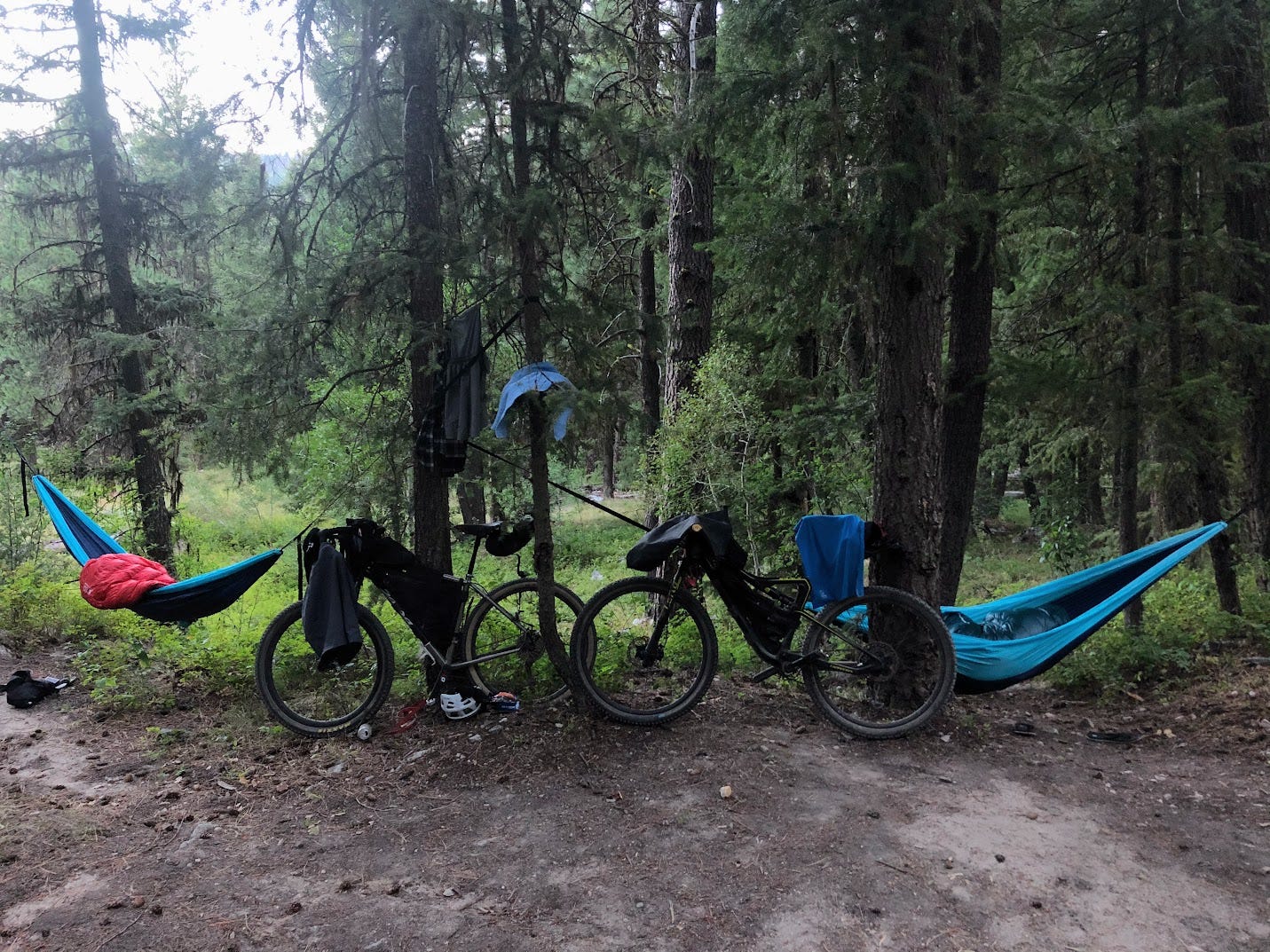Bikepacking Basics | Shelter
This 5th installment in our Bikepacking Basics Series covers shelter types, pros and cons, and tips.
Our Bikepacking Basics Series is intended for those new to the sport. While you can find this information in many places, we hope that this will be an easy and unintimidating place to start.
Introduction
Carrying all you need to shelter in place and get a good decent night’s sleep is a key part of bikepacking. While some crazy racers can survive with little to no sleep, we highly recommend the ride → camp → repeat approach!
In this article we will cover three basic shelter types — tents, bivies, and hammocks. Of course there are others, but this will at least get you started.
If you’re in our area, consider trying the shelter options we have in the Gear Library before buying.
Tents
There are many types of tents, but here we’re focusing on ultra-light backpacking styles. To continue your research, read further about the differences between single vs. double wall construction, and between freestanding vs. non-freestanding.
Pros
The best shelter for inclement weather, especially rain
Better protection from bugs and animals
Privacy
Space to also shelter your gear
Cons
Most expensive option
Heavier and more bulky
Slower setup and takedown
Tips
Aim for under 2 lbs. for a one-person tent, and under 3 lbs. for a two-person. If you have the funds, you can get closer to 1 lb.
Some models can be set up with footprint, poles, and rainfly only to really reduce the weight.
We like REI’s Flash Air line, which has a good balance between weight and price.
Zpacks Duplex Lite, or other similar tents made from Dyneema, are super light but not cheap.
Big Agnes and Nemo have models with bikepacking specific features including shorter poles that are easier to pack on a bike.
Bivies
From the french “bivouac,” meaning a temporary camp without cover.
AKA bivy, bivy sack, body bag, or bear burrito :)
Pros
Less expensive
Small and light
Very easy setup and takedown
Clear view of the sky
Small and stealthy — ideal for racing when you want to be able to sleep almost anywhere
Cons
Not great for inclement weather, especially rain
Less protection from bugs and animals
Less privacy
Limited space to shelter your gear
Most prone to condensation buildup
Claustrophobic for some
Tips
A good bivy should be around 1 lb., waterproof, and with a mesh bug screen panel.
Bivies can be ideal for a light and fast kit, especially for racing.
Keep your head (or at least your nose and mouth) out as much as possible to reduce moisture inside from your breath.
Some models have a small pole arch over the head which can be more comfortable and less claustrophobic.
We like Sierra Designs Backcountry and Outdoor Research Helium models.
Hammocks
We generally do not recommend hammocks for bikepacking. They’re just not sufficiently practical, reliable, or comfortable.
Pros
Small and light
Clear view of the sky
Cons
Not suitable for inclement weather, especially rain
Can be very cold on the underside unless you also use an underquilt
Most find it uncomfortable to not be able to lay flat
Less protection from bugs and animals
Less privacy
Limited to no space to shelter your gear
Setup can be challenging to impossible if tree size and spacing doesn’t match your straps
Not suitable for areas without plenty of trees
Most prone to failure due to tearing fabric or straps. Yes, this has happened in our group — twice actually!
Tips
Again, we don’t recommend hammocks unless you really want to try something different.
They’re better for relaxing than sleeping; bring one as your luxury item on a slow-pace trip.
Hummingbird hammocks and straps are very lightweight.
Bottom Line
Choose a tent if you prioritize comfort, weather protection, or are on a longer trip where downtime matters.
Choose a bivy if you prioritize simplicity, speed, stealth, and low weight.
Avoid hammocks unless you know well the cons and have tested your ability to sleep comfortably in one.




